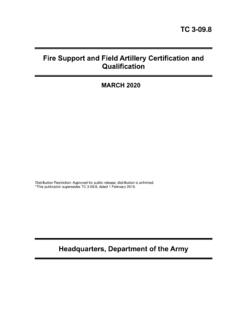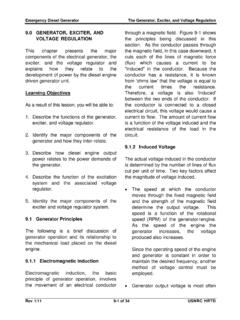Transcription of Quick Setup Guide for Winlink VHF/UHF Sound Card Packet …
1 1 Quick Setup Guide for Winlink VHF/UHF Sound Card Packet on Windows with UZ7HO Soundmodem Software TNC By Oliver K6 OLI and Scott NS7C Last Update 2019-12-2 Thank you, Mike KM6 KAQ, Scott KI6SC, Brian KM6 IGY, Lew AC6LS, Keith KD6 PYD, Jim KM6 TGJ, Ken KI7 EIH, Joe AH0A, Tom N5TW, and Mike XE2/N6 KZB for testing, for your suggestions, insights and encouragement. And special thanks to Phil W4 PHS and Andy UZ7HO whose programming skills, smart work and dedication make Winlink and Sound card Packet the powerful and robust combination that it is. This Guide covers multiple Sound card hardware options. Only follow the steps that are required for your specific hardware configuration.
2 Quick Setup Guide for Winlink VHF/UHF Sound Card Packet on Windows with UZ7HO Soundmodem Software TNC 1 Get the Software 2 Soundcard Considerations 2 Quick Tip: Build a direct shortcut to your Sound cards for Quick access: 3 Setting up Soundmodem Devices 4 Option 1 PTT Settings for Signalink 5 Option 2 PTT Settings for C-Media Devices 5 Option 3 PTT Settings for CAT control 6 Modem Settings 8 Adjusting TX and RX Levels 9 Winlink Express Setup 13 Quick Tip: Winlink Express Setup 13 Packet Winlink 14 Connecting to a gateway 16 Successful Exchange 17 Quick Tip: Channel Selection 18 Quick Tip: Winlink Screen Resolution Fix 19 2 Get the Software Download Soundmodem: soundmodem###.
3 Zip from here and extract the files in a location you can find easily. We recommend creating a folder called C:\UZ7HO\ Also, at the UZ7HO website, download the file and unzip this file to the same folder where you saved soundmodem. This dll is needed for PTT control on some Sound cards and also CAT control of PTT. If you are using a Signalink only, this file is not needed. Winlink Express: (Always check any downloads with your antivirus before executing) Soundcard Considerations After you have hooked up your Sound card/radio, please make sure it is not selected as the Windows default audio device. You can also change the name of your device from the default Windows naming to something more descriptive.
4 To do these steps, right mouse click on the speaker icon: Select Open Sound Settings, Under Output, select USB Audio CODEC Click on Device Properties Rename your device ( Signalink TX) Click the back arrow in the upper left corner Under Input, select USB Audio CODEC Click on Device Properties Rename your device ( Signalink RX) Click the back arrow in the upper left corner Click on Sound Control Panel Select the Playback tab. Click your computer s internal soundcard (Speakers) and click Set Default. Then select the Recording tab and again 3 select your computer s internal soundcard (Microphone) and click Set Default.
5 There should be a green check mark on the internal Sound card devices now. Click OK. Note: The USB device names vary depending on the device type and manufacturer, and the number of USB Sound devices attached to your computer. If you are not sure which device is the correct one, unplug and then replug the USB cable while watching the Sound Control Panel. Quick Tip: Build a direct shortcut to your Sound cards for Quick access: - Right-click on Desktop - Select Create Shortcut - In "Type the location of the item" copy and paste control - Click Next - Type Sound cards - Click Finish Customize your Soundcards Shortcut icon: Properties -> Shortcut -> Change Icon -> paste C:\Windows\system32\ 4 Setting up Soundmodem Devices Go to the file you extracted earlier.
6 Double-click to run the program. On the Soundmodem main panel, click Settings then Devices. You will see this panel: 5 Use the pull-down options to select your Output and Input devices: Output device: Speakers (USB Audio CODEC) [or whatever name you gave it] Input device: Microphone(USB Audio CODEC) [or whatever name you gave it] Uncheck TX rotation Check Single channel output Optional: Check Color Waterfall (on older and slower computers leave this unchecked) Optional: Check Stop waterfall on minimize (also good for slower computers) AGWPE Server Port 8000 Uncheck Enabled (unless needed for other applications) KISS Server Port 8100 Check Enabled The steps below set the PTT port for different hardware configurations.
7 Choose only the PTT option that matches your specific configuration: Option 1 PTT Settings for Signalink Signalink provides PTT via its internal VOX circuit, so no PTT control from soundmodem is needed. Follow these steps. Select PTT Port: NONE Uncheck Dual PTT Uncheck Swap COM pins for PTT Click OK Continue with Modem Settings Option 2 PTT Settings for C-Media Devices If you are using a C-Media based Sound card interface that uses GPIO pin 13 for PTT (typical of AllStar devices like the RA series, Rim Lite, etc.) follow these steps. Select PTT Port: EXT Click OK You will receive an Information message that the device could not be opened, and the option to check advanced settings, click Yes 6 The PTT driver will search for devices and display a panel to select your device.
8 If you only have one device attached, this will be your only option. If you have multiple devices attached, you will have a pull-down option to select the correct one (it is possible to have multiple devices attached, and more than one copy of Soundmodem running). The test button will cause a brief PTT action to test your device. Click Apply to save your settings. Uncheck Dual PTT Uncheck Swap COM pins for PTT Click OK Continue with Modem Settings Option 3 PTT Settings for CAT control If you are using a radio with a built-in Sound card, and will be using CAT/CI-V commands for PTT, follow these steps. Select PTT Port: CAT Click OK You will receive a Warning message that you must restart the program, click OK.
9 Close, and then restart Soundmodem, then on the Soundmodem main panel, click Settings then Devices. Click on Advanced PTT Settings, which will bring up the CAT settings panel. Use this panel to select the radio type and communications port settings. If your specific model radio is not listed, try the generic setting for your radio s manufacturer ( Icom). 7 The communications parameters (baud rate, Parity, etc.) must match the parameters from your radio s settings menu. The screenshot above is just an example, your settings will likely be different. Click Apply to save your settings. Uncheck Dual PTT Uncheck Swap COM pins for PTT Click OK Continue with Modem Settings.
10 8 Modem Settings On the Soundmodem main panel, click Settings then Modems You will only have to change settings in Modem filters ch:A , ignore ch:B Check Default settings Check KISS Optimization Check non-AX25 filter Under Modem type ch: A Set Mode to AFSK 1200bd Enter TXDelay 500 msec 9 Note: TXDelay and TXTail can be adjusted over time. 500 and 50 are good starting numbers, your radio may support lower or require higher numbers. Click OK In the main Soundmodem panel make sure the modem type and center frequency are set as follows: A: AFSK 1200bd 1700 Check Hold pointers (which ensures that 1700 stays set) Adjusting TX and RX Levels Note: Adjusting these levels properly is essential for maximum data throughput.







